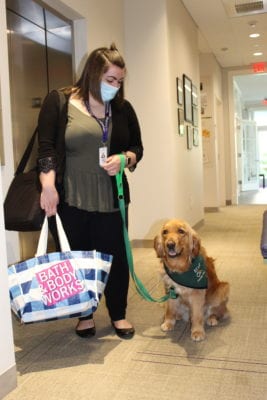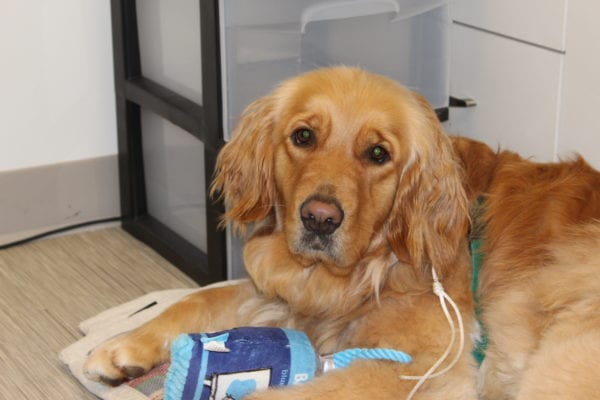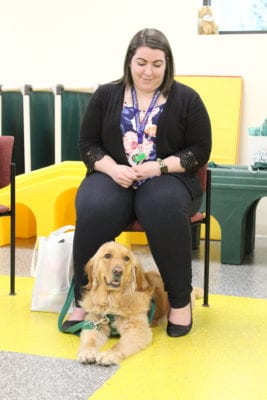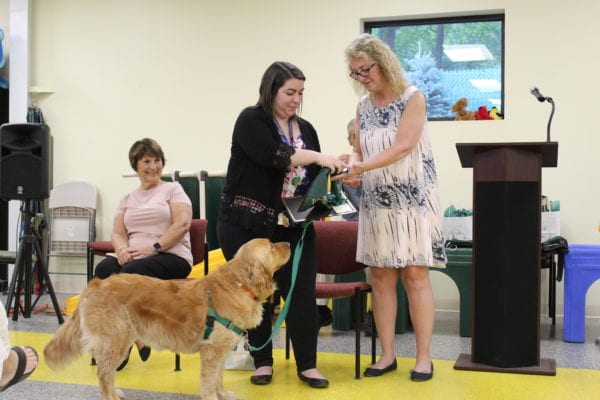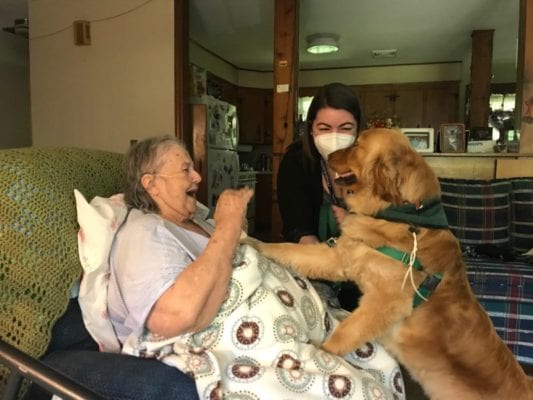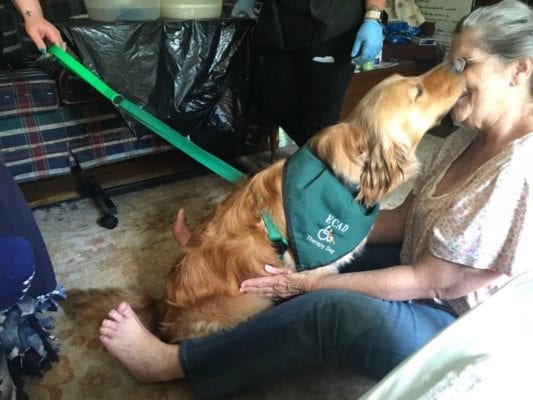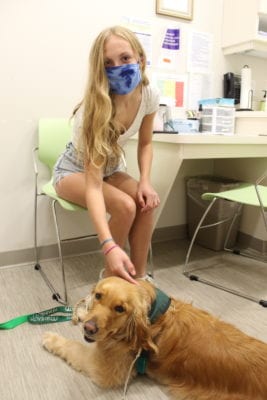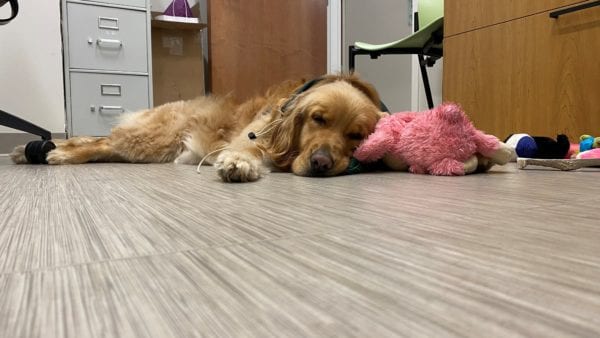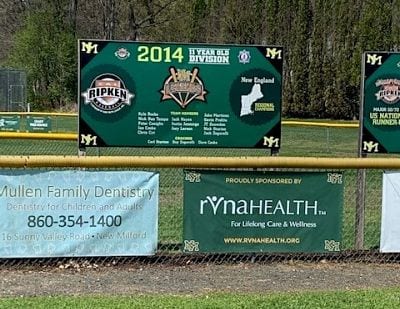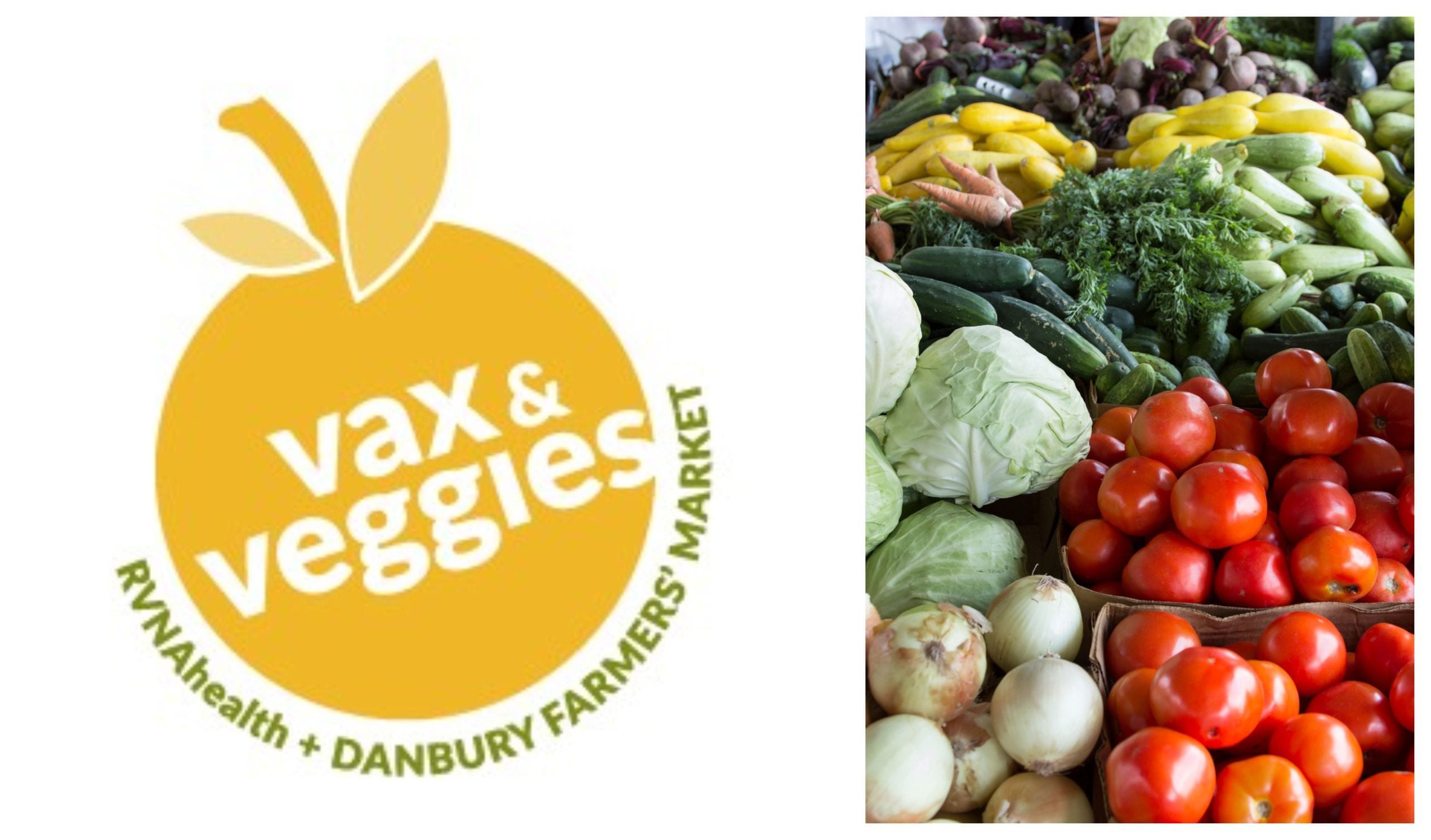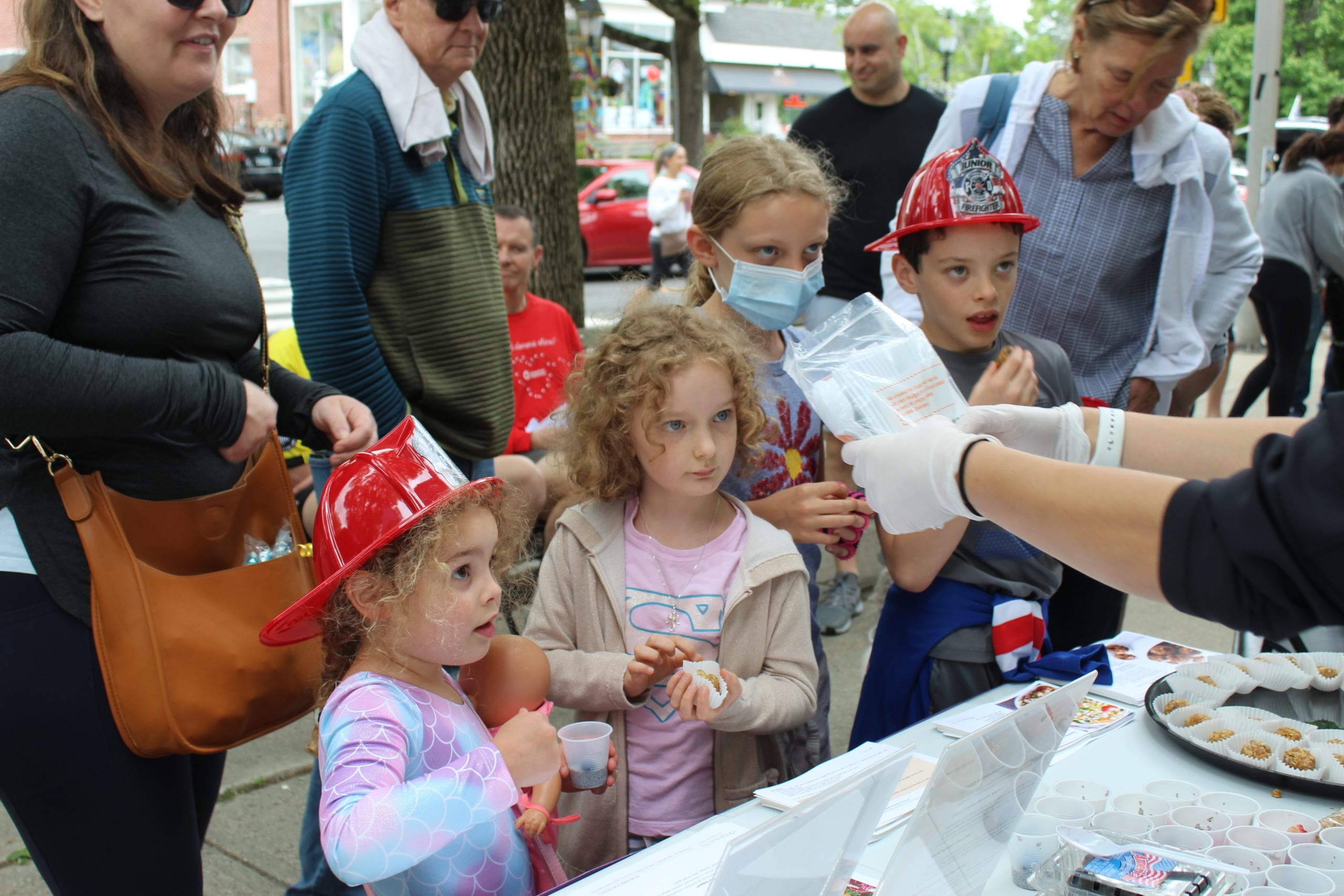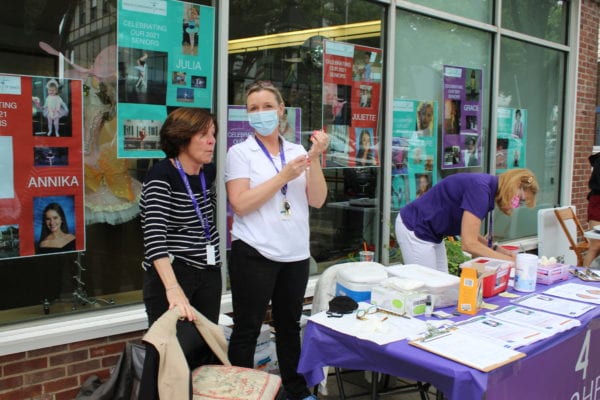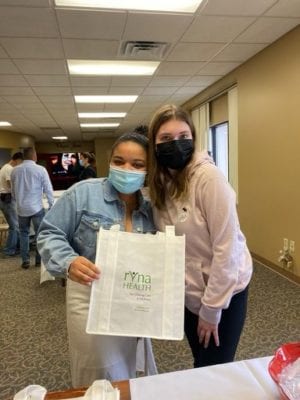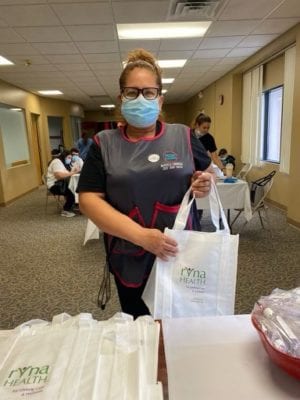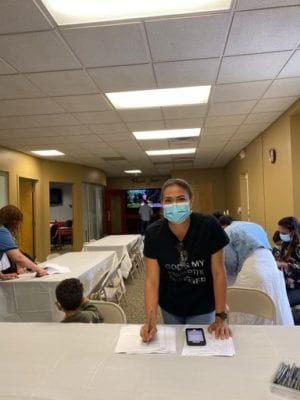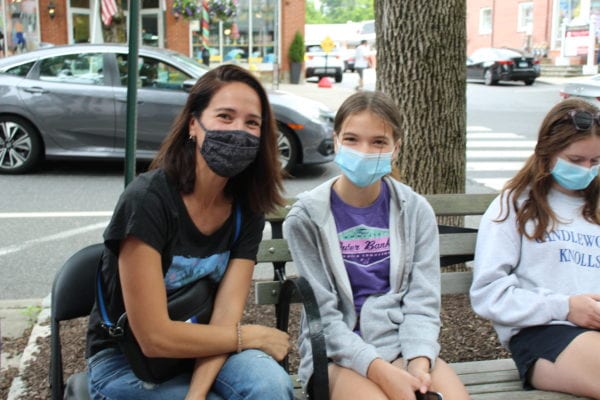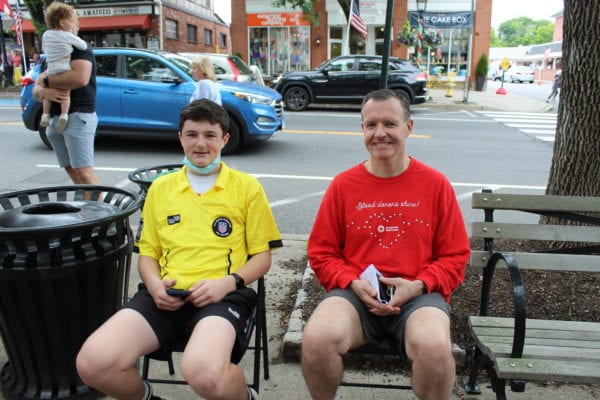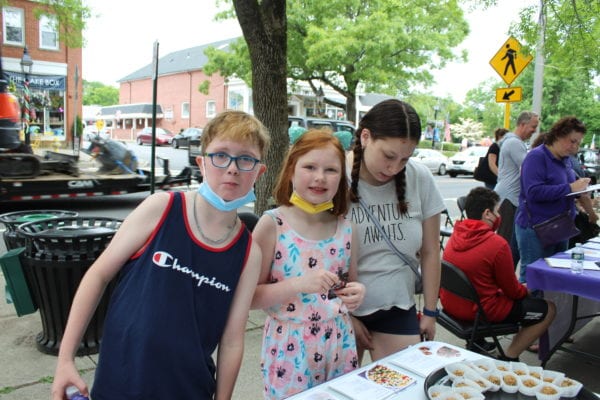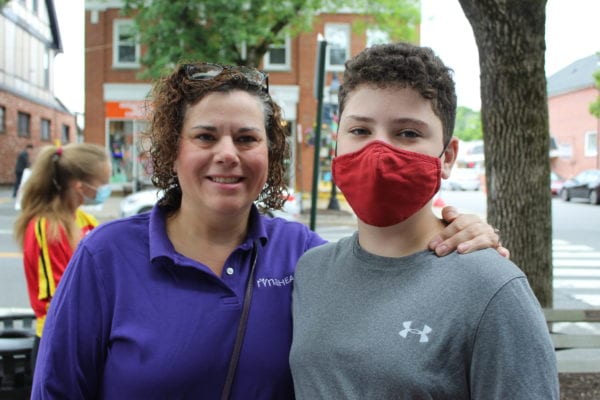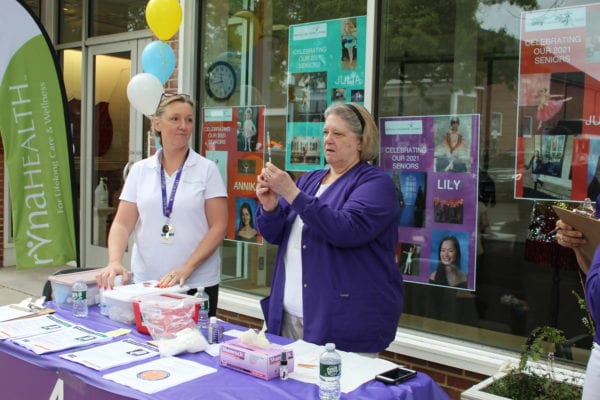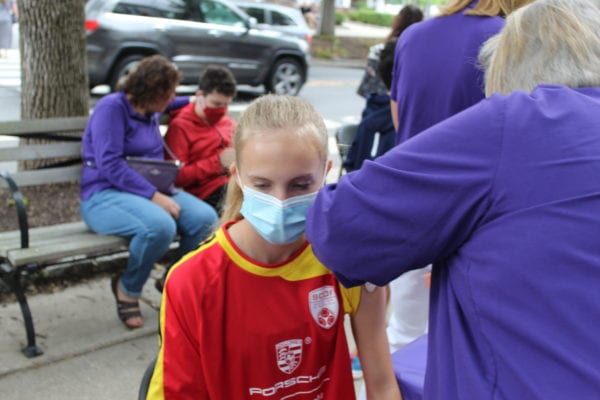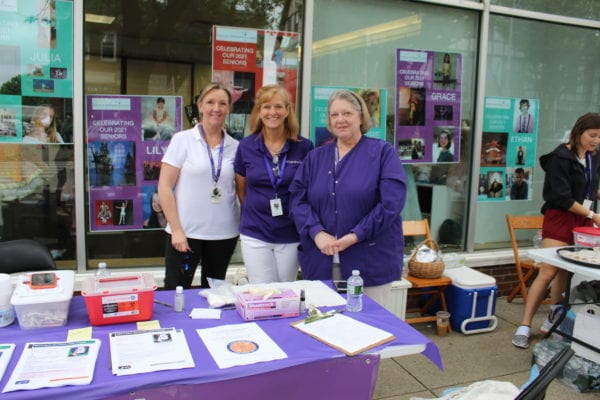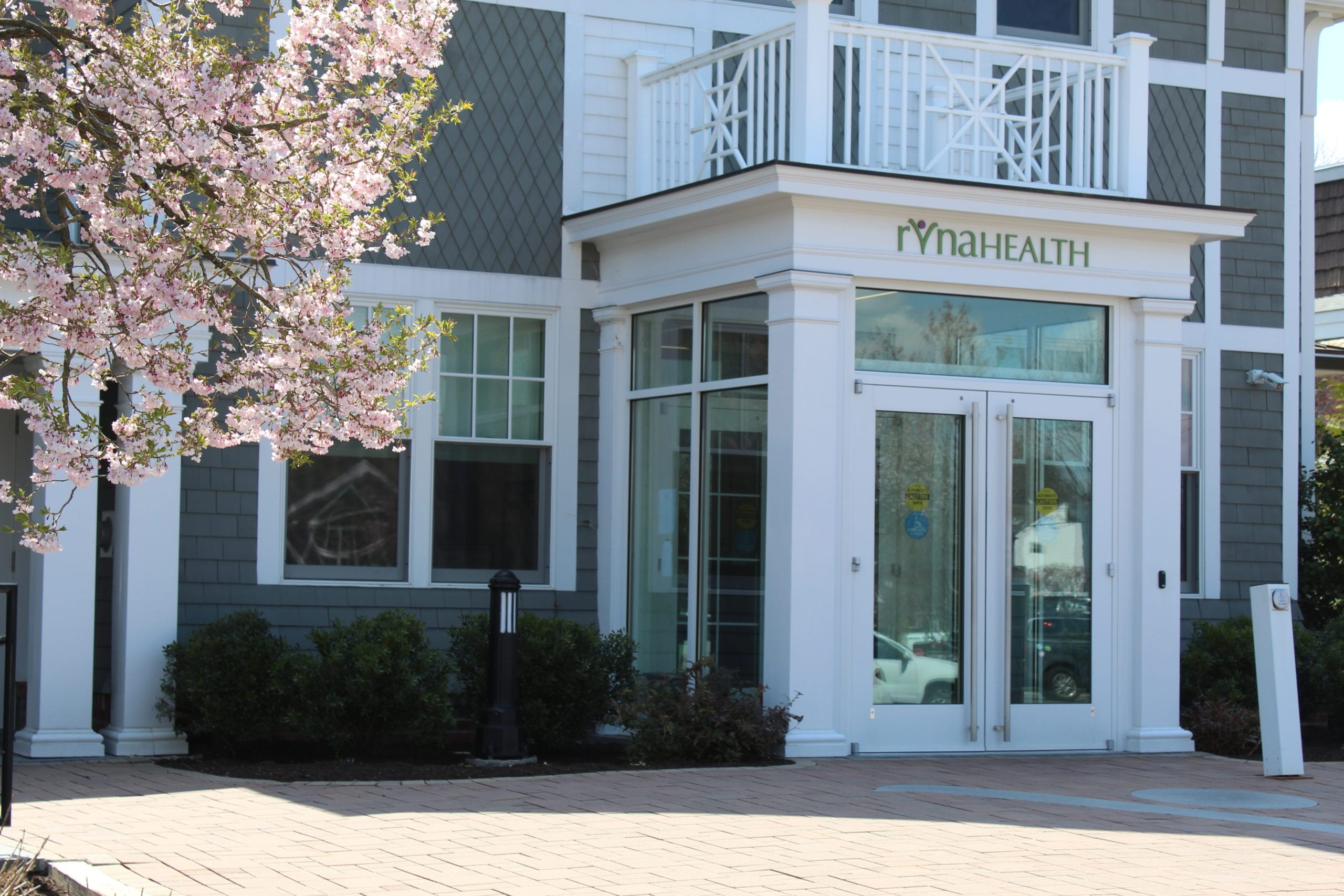Welcome Sophia!
On June 8th, we welcomed a very special addition to our RVNAhealth team — Sophia, our very own therapy dog! There have been lots of ooohs and aaahs around the RVNAhealth offices since she arrived and several weeks later, it still takes Sophia quite a while to get to her desk in the morning — what with all the greetings and affection.
Sophia, a golden retriever, is two years old and has been in training since her birth. She was originally intended to be a seeing eye dog, but her calm demeanor and mild pace ultimately destined her to be the perfect facility/therapy dog.
Prior to her arrival in the office, our three RVNAhealth handlers, Stephanie Peppe, Hospice Volunteer Coordinator; Stephanie Collins, BeWELL Coordinator; and Garrett Walkup, Hospice Pastoral Care Coordinator received extensive training with Sophia at ECAD — Educated Canines Assisting with Disabilities. They all passed their final exams, and graduation took place on June 16th. It was a lovely ceremony with four other graduates alongside our Sophia. It wasn’t announced officially, but we suspect she was the valedictorian. She’s awfully smart.
Since her arrival, Sophia has been busy getting acquainted with the RVNAhealth Ridgefield and New Milford offices, her working role, and her handlers. She has been on hospice patient visits, has visited Ridgefield Crossings and Wilton Meadows, and has chaperoned at COVID-19 vaccine appointments. We’re looking forward to bringing her to all the towns we serve. Sophia truly comes to life when she’s doing her job. As should we all!
In the weeks and months to come, she’ll be going to volunteer events, bereavement groups, and community education and outreach events. As Sophia’s schedule fills up and we introduce her to society, we’ll keep you posted on opportunities to say hello. She’s quite a darling. Check out the photos below.
RVNAhealth Heads to the Ball Fields
Danbury Farmers’ Market and RVNAhealth Team Up for Vax + Veggies
RVNAhealth Recognized for Above & Beyond Pandemic Response
On the Road with COVID Vaccines
It was a busy weekend for RVNAhealth as we took our show on the road bringing COVID-19 vaccines — and food — to local events in Danbury and Ridgefield. In Danbury, we administered over 40 vaccines at the Assembly Church of God alongside our friends at the Community Food Rescue CT, who arrived with a refrigerated truck of food. After receiving COIVD-19 vaccines, attendees at the clinic received bags filled with goodies to take home with them.
In Ridgefield, we joined the We All Shine On festival, offering COVID-19 vaccines to kids right there on Main Street and serving up delectable energy bites and chia seed pudding, handmade by RVNAhealth registered dietitian and nutrition educator, Monica Marcello, MS, RD, who was on hand with recipes and education.
An RVNAhealth Running Assessment – Great Gift for Father’s Day!
Sponsor Spotlight: The Greens & Wilton Meadows
RVNAhealth to Host COVID-19 Vaccine Clinics for Children with Special Needs
Beginning Thursday, June 10th, RVNAhealth will begin offering COVID-19 vaccine clinics for children with special needs, ages 12-18. The clinics will be held at RVNAhealth in Ridgefield each Thursday in June (6/10, 6/17, and 6/24) from 9:00am – 10:30am. Additional clinics will be added in July if needed. These limited appointments are reserved especially for kids with special mental, physical, or emotional needs. The light, clean environment of the RVNAhealth Center for Exceptional Care, paired with the skill and experience of RVNAhealth nurses, offers a calming environment and experience for vaccine recipients.
Appointments may be made here.
Please contact Stephanie Collins at 203-438-5555 x1012 with questions or for further information. The Pfizer-BioNTech COVID-19 vaccine will be administered, and second dose vaccines will be offered three weeks following the first dose.
These clinics are being offered as part of RVNAhealth’s mission to bring the COVID-19 vaccine to individuals and communities without easy access, or with more complicated situations. This initiative is made possible by the generosity of the Barker Welfare Foundation, Ridgefield Fresh Air Fund and the Anna-Maria and Stephen Kellen Foundation.
RVNAhealth to Offer COVID-19 Vaccines to Kids Ages 12-18 at We All Shine On
On Saturday, June 12 (rain date June 13), RVNAhealth will be offering COVID-19 vaccines to area children ages 12-18 at the We All Shine On town festival in Ridgefield. The vaccines (Pfizer-BioNTech) will be offered from 10:00am – 12:00pm at the RVNAhealth table in front of the Ridgefield Conservatory of Dance at 440 Main Street. No pre-appointments are being scheduled —interested families may walk up, or schedule a time at the RVNAhealth booth on the day of the fair. Parents/guardians must be present and a 15-30 minute monitoring time will follow the administration of the vaccine.
While IDs and insurance are not required to receive the vaccine, we do ask that those with insurance bring their cards to help cover the costs of vaccine administration.
With over 15,000 COVID-19 vaccines already administered, and thousands of flu shots under our belt each year, the RVNAhealth nursing team is especially experienced and sensitive to the concerns of kids and shots. Even at a springtime street fair, we are committed to a calm, efficient and pleasant experience. Post vaccine treats will most certainly be offered.
RVNAhealth will not be back out on Main Street for second doses three weeks following these vaccines, but we’ll work with all attendees to schedule your second vaccine. Please contact RVNAhealth at 203-438-5555 x1012 with any questions.
This initiative is made possible by the generosity of the Barker Welfare Foundation, Ridgefield Fresh Air Fund, and the Anna-Maria and Stephen Kellen Foundation.






